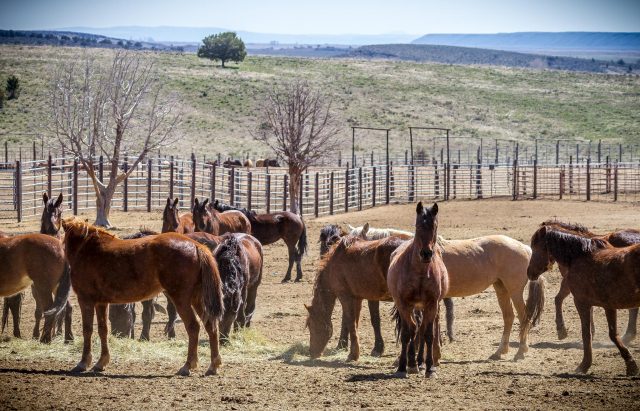
BLM Policy Changes & Interior Appropriations Bill Could Bring Big Changes to Mustang Management
Recent policy shifts have the potential to make big changes to the way wild horses are managed. Here are the latest details.
The management of the United States’ population of wild horses has been a hotly debated issue for decades with tensions running high on all sides. The Bureau of Land Management (BLM) within the Department of the Interior has been charged with the management of wild horse herds on public lands, attempting to find the best balance between viable populations of wild horses and native game, plus livestock on grazing permits, all on a government budget.
Current policy allows the BLM to gather what it deems excess wild horses and transfer those horses to holding facilities; while some horses are adopted each year, there are more horses coming off the range than can easily find homes. A large percentage of the BLM’s annual budget is tied up in caring for the thousands horses in long-term holding.
Recent changes to policy may have consequences for wild horses:
Bureau of Land Management policy change
Previous rules restricted the number of horses who could be sold to a single buyer to four, but the updated policy increases that number to 25.
As BLM policy stands, wild horses removed from the range will be made available for public adoption with three chances to be adopted. Each adoption event in which a horse fails to be adopted is counted as a strike; horses with three strikes are transferred to off-range long-term holding facilities where they can then be sold. Untrained horses can sell for a minimum of $25; trained horses (meaning halter- and saddle-broke) start at $125.
This increase in the number of horses available to a single buyer will allow the BLM to potentially move more horses to private ownership rather than long-term holding. Wild horse advocates argue that this increase will lead to more horses potentially being shipped out of the country for slaughter. While the BLM’s official policy states that horses will not be sold to result in commercial consumption, the increase in number of horses able to be sold to a single buyer seems to make it easier for horses to change owners in large quantities with more potential to be shipped to slaughter.
Interior appropriations bill
The text of the bill does specifically state that wild horses will not be shipped to slaughter, at least not directly:
Appropriations herein made shall not be available for the destruction of healthy, unadopted, wild horses and burros in the care of the Bureau or its contractors or for the sale of wild horses and burros that results in their destruction for processing into commercial products.
The following amendment states makes appropriations for permanent sterilization of wild horses:
Notwithstanding the first section and section 2(d) of Public Law 92–195 (16 U.S.C. 1331 and 1332(d)), the Secretary of the Interior may hereafter manage any group of wild horses or burros as a nonreproducing or single-sex herd, in whole or in part, including through chemical or surgical sterilization.
While the PZP vaccine has been found to be an effective management tool on specific wild horse herds as well as feral populations of coastal ponies on the East Coast, the BLM has rejected the vaccine (delivered via dart gun) as a viable option for wide-scale use. Instead, this amendment would give the BLM the ability to permanently and irreversibly sterilize certain populations of horses in management areas. Advocates argue that the proposed sterilization methods are inhumane and could lead to the suffering and death of wild horses.
We will continue to follow further developments in wild horse policy here on Horse Nation.







Leave a Comment